Hoffmannseggia microphylla, Wand Holdback
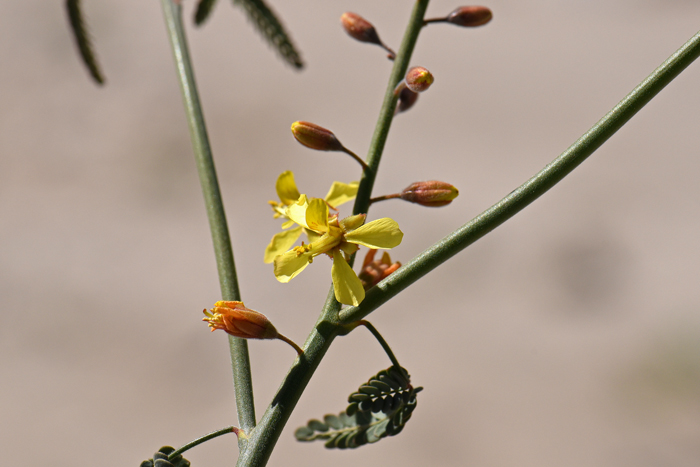
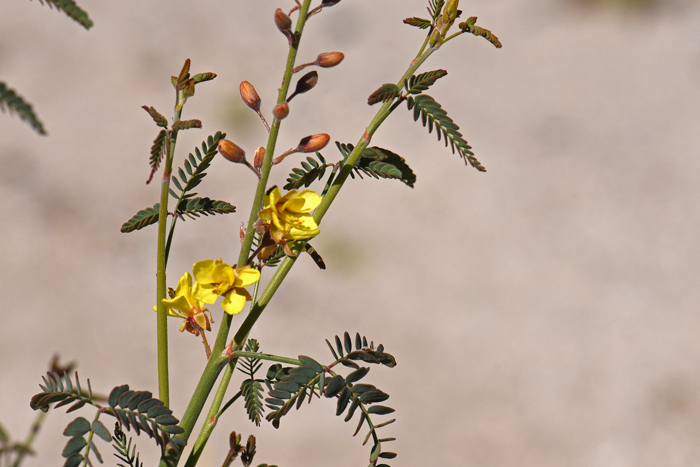
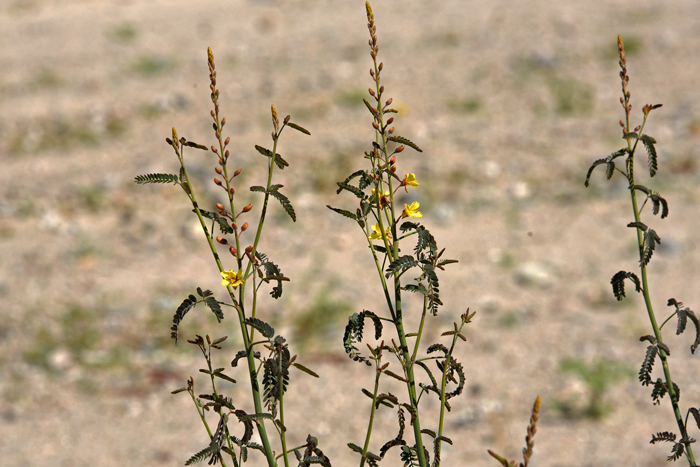
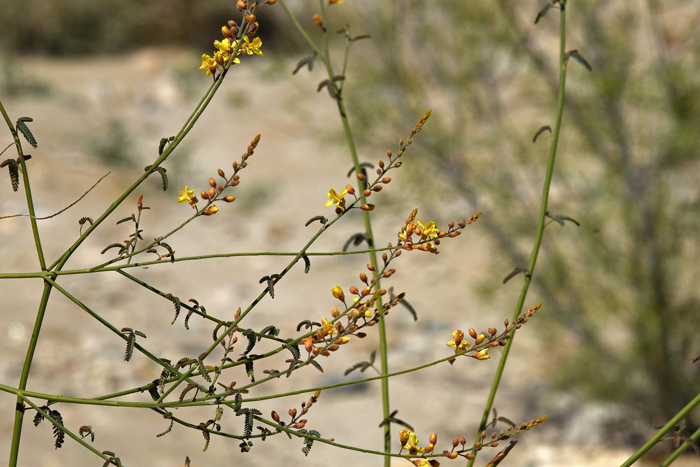
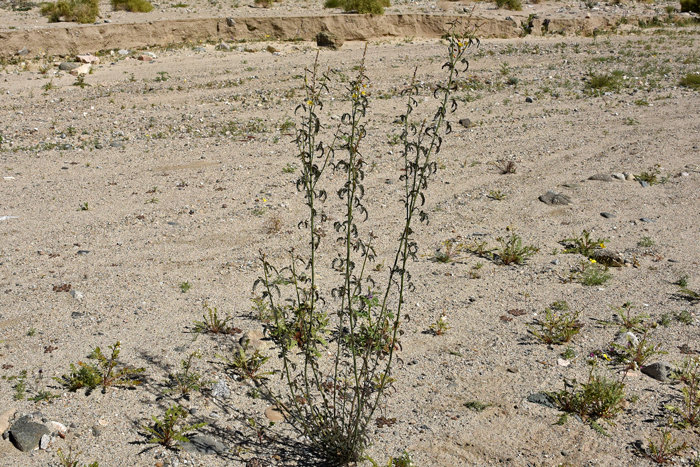
Scientific Name: Hoffmannseggia microphylla
Common Name: Wand Holdback
Also Called:
Family: Fabaceae or Leguminosae Family
Synonyms: (Caesalpinia virgata)
Status: Native
Duration: Perennial
Size: Up to 7 feet (2.1 m) or more.
Growth Form: Wand Holdback is a Shrub which stands erect; the plants are densely puberulous and have a woody taproot.
Leaves: Leaves are green and bipinnately compound, each leaf has 3 leaflets, leaves soon become deciduous and fall off.
Flower Color: Wand Holdback is yellow, yellow with red-streaked; the flowering stalk or inflorescence is an elongate raceme and the fruits are crescent- or sickle-shaped pods.
Flowering Season: March to October; April in California.
Elevation: Up to 1,000 feet (305 m); up to 3,000 feet (914 m) in California.
Habitat Preferences: Dry sandy or rocky mesas and slopes.
Recorded Range: Wand Holdback is relatively rare in the United States where it is found only Arizona and California. In Arizona it is limited to the southwest corner of the state; the largest populations occur in California where it is found in the southeast and Inyo County, California. It is also native to Baja California and Mexico.
North America & US County Distribution Map for Hoffmannseggia microphylla.
North America species range map for Hoffmannseggia microphylla:
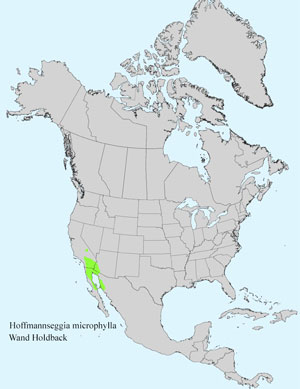
U.S. Weed Information: Unknown
Invasive/Noxious Weed Information: Unknown
Wetland Indicator: Unknown
Threatened/Endangered Information: Unknown
Genus Information: In North America, USDA Plants Database lists 13 native species for Hoffmannseggia. Worldwide, The Plant List includes 32 accepted species names for the genus.
The genus Hoffmannseggia was published in 1798 by José (Joseph) Antonio Cavanilles, (1745-1804).
In the Southwestern United States: Arizona and New Mexico each have 5 species of Hoffmannseggia, California has 3 species, Nevada and Utah each have 2 species and Texas has 11 species. Data approximate, subject to revision.
Comments: The genus Hoffmannseggia is commonly referred to as “rushpeas”. As with many species in the Fabaceae, the fruit are pods. Rushpeas are native to the North- and South-America and also to south Africa.
In Southwest Desert Flora also see: Indian Rushpea, Hoffmannseggia glauca.
The genus Hoffmannseggia was published in 1798 by José (Joseph) Antonio Cavanilles, (1745-1804).
The species epithet “microphylla” translates to “micro” which means small and “phylla” which means leaf or small leaved.

